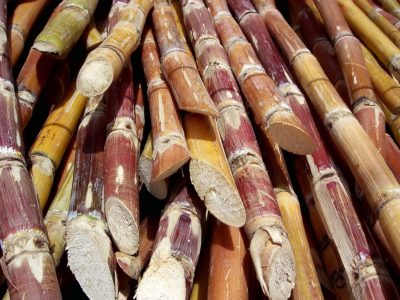How Cane Sugar Processing Chemicals Improve Sugar Quality and Return
The duty of processing chemicals in walking stick sugar manufacturing is crucial, as they directly affect both the high quality and return of the final item. The consolidation of activated carbon and enzymes offers to enhance the malfunction of complicated sugars, ultimately leading to a purer and higher-quality sugar.
Review of Walking Cane Sugar Processing
Walking cane sugar handling involves a series of important actions that transform raw sugarcane right into refined sugar items. The procedure begins with harvesting, where mature sugarcane stalks are reduced and moved to refining centers. Upon arrival, the walking stick undergoes washing to eliminate contaminations such as dirt and plant products.
Adhering to washing, the cane is squashed to extract the juice, which includes sucrose - sugar and cane. This juice goes through explanation, where lime and warm are used to get rid of continuing to be contaminations and non-sugar components. The clarified juice is then vaporized to concentrate the sugar material, resulting in the development of thick syrup
Next, the syrup is taken shape with a controlled air conditioning process, leading to sugar crystals. These crystals are divided from the staying syrup in centrifuges. The raw sugar acquired is generally brown because of residual molasses material. To accomplish refined sugar, more purification steps are applied, consisting of cleaning, re-crystallization, and drying.
The last product is either packaged as raw sugar or better refined into white sugar, catering to different customer and industrial needs. This thorough collection of actions guarantees the manufacturing of high-grade sugar, essential for countless applications in food and beverage sectors.
Key Processing Chemicals Used
The production of polished walking stick sugar counts on numerous processing chemicals that play substantial duties at various phases. Among one of the most important are lime (calcium hydroxide), phosphoric acid, and sulfur dioxide. Lime is primarily used during the clarification phase to counteract level of acidity and precipitate impurities, leading to a more clear juice. This action is necessary for improving the general top quality of the drawn out juice.
Phosphoric acid offers a twin objective; it boosts the information procedure and aids in the removal of color-forming compounds, adding to a higher purity of the last item. In addition, sulfur dioxide functions as a lightening representative, permitting the effective removal of unwanted pigments and enhancing the shade of the sugar.
Various other noteworthy chemicals consist of activated carbon, which is utilized for more decolorization, and enzymes that assist in the malfunction of complex sugars into easier types, therefore improving yield. The mindful selection and application of these handling chemicals are critical for optimizing the effectiveness of sugar removal and refining procedures, ultimately leading to a more consistent and better sugar product.

Influence On Sugar Quality
How do handling chemicals affect the top quality of refined sugar? The introduction of different chemicals in the cane sugar handling stage considerably enhances the purity and overall high quality of the last product.
Furthermore, making use of turned on carbon and ion-exchange resins during the refining process plays a vital role in getting rid of off-flavors and unfavorable odors, adding to the sugar's sensory account. This improvement not only boosts the organoleptic and visual high qualities but additionally enhances the rack life by reducing microbial task related to pollutants.
In addition, the accurate application of these chemicals makes sure that the sugar displays a constant grain size and flowability, which are essential features for both industrial applications and customer preferences. On the whole, the calculated use processing chemicals is basic in attaining premium polished sugar that fulfills sector requirements and consumer expectations.

Enhancing Return Effectiveness
Enhancing return efficiency in cane sugar handling includes maximizing numerous phases of production to make best use of the quantity of sugar drawn out from raw cane. One important aspect is the option and application of proper processing chemicals, which can help with the malfunction of cell walls and boost sugar launch during extraction. Chemicals such as enzymes and acids play a crucial role in this procedure by hydrolyzing polysaccharides and liquifying impurities, therefore improving the overall removal effectiveness.

Regular tracking and adjustment of processing parameters are vital to maintain effectiveness throughout production go to the website (sugar and cane). By using these approaches, sugar producers can not just raise the amount of sugar obtained however also decrease waste and reduced production expenses, contributing to an extra successful and lasting sugar processing procedure
Benefits for Consumers and manufacturers
Cane sugar processing chemicals use significant advantages for both manufacturers and customers, producing a more efficient and sustainable market. For manufacturers, these chemicals enhance removal procedures, leading to greater yields and improved sugar top quality.
For customers, the advantages are equally engaging. The better top quality of sugar translates to much better preference and consistency in food. Additionally, making use of processing chemicals can result in an extra secure supply of sugar, alleviating scarcities and rate spikes that can occur due to environmental variables or market fluctuations. The advancements in manufacturing methods contribute to sustainability initiatives by decreasing source usage and waste generation, appealing to environmentally mindful customers.
Verdict

The function of processing chemicals in walking stick sugar production is critical, as they straight affect both the top quality and yield of the final item (sugar and cane). The unification of turned on carbon and enzymes serves to maximize the malfunction of complex sugars, inevitably leading to a purer and higher-quality sugar.Walking cane sugar handling includes a series of essential steps that transform raw sugarcane right into refined sugar items.Enhancing yield performance in walking stick sugar processing includes check my reference maximizing various phases of production to maximize the amount of sugar extracted from raw cane.Walking cane sugar processing chemicals play a crucial role in boosting both sugar high quality and return